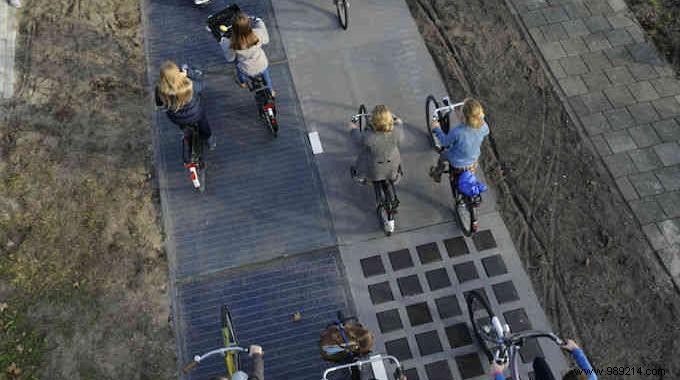
After just 6 months of operation, the world's very first solar road has supplied even more energy than its designers had estimated.
Since opening late last year in the Netherlands, this route has produced more than 3,000 kilowatt-hours (kWh) , equivalent to the annual electricity consumption of a house.
This positive energy solar road project is called SolaRoad.
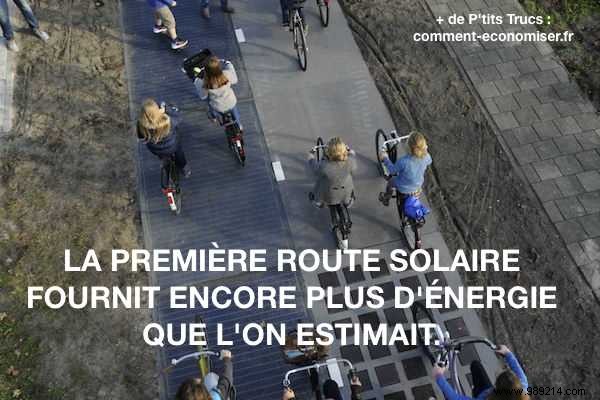
In this press release, Sten de Wit, spokesperson for the project, explains:“If we project our results over a whole year, we anticipate a production of more than 70 kWh per square meter of solar road .
“The actual electricity production after 6 months of operation is clearly in the upper range of our forecasts following laboratory tests. Therefore, it can be concluded that the implementation of the solar road is a true success ! »
In addition, De Wit reveals that the energy production of the solar road has "far exceeded his expectations".
Measuring approximately 70 m, the road is covered with photovoltaic tiles protected by 2 layers of safety glass. For its beginnings, the road is in the form of a cycle path, a use that reflects the environmental policy of the Netherlands and its famous cycling culture.
But according to the designers of the SolaRoad project, this technology could perfectly withstand greater traffic and load .
Indeed, the numbers are promising. So far, 150,000 cyclists have already ridden on this solar route. And according to Arian de Bondt, managing director of Ooms Civiel (one of the project partners), the designers are developing photovoltaic tiles that can resist cars and buses .
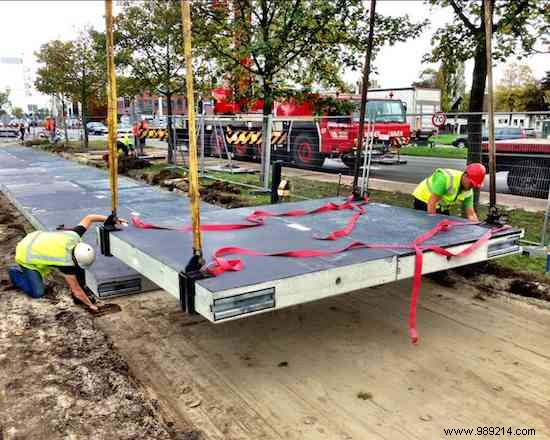
For the designers of SolaRoad, this first solar road is a pilot project. For now, the cycle path connects only two suburbs of Amsterdam (Krommenie and Wormerveer).
But if the road continues to provide so much electricity, it could indeed serve as a model to build even more roads and bike paths in the future.
The next step ? Over the next 30 months, researchers will conduct several studies on road performance .
In particular, they will analyze the resistance of the road and, of course, its energy production . By the end of the year, the road should already be extended for more than 100 m.
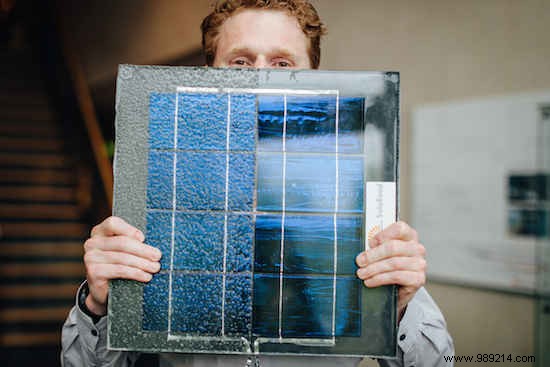
Although everything is going well for this solar bike path project, solar roads are not as efficient as traditional photovoltaic panels (i.e. solar panels placed on a roof or in a field).
Indeed, the photovoltaic panels of the slabs of the solar road cannot be tilted . Consequently, they produce less electricity than panels installed on roofs or in fields, which can be tilted depending on the radiation of the sun.
On the other hand, the solar road has a great advantage . This is because it does not occupy large areas of land, as is the case with the parks of photovoltaic power plants.
And therefore, solar roads can be deployed anywhere where there are roads or bike lanes — including in urban areas .
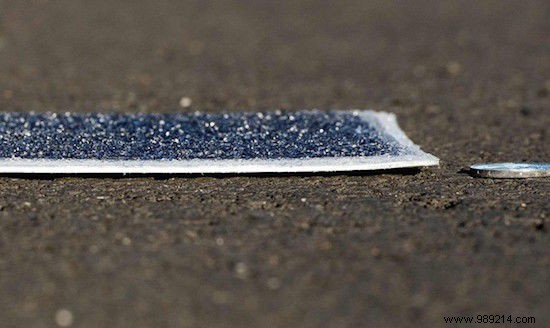
If the Netherlands was the first to build a solar road, France is far from lagging behind.
Indeed, Ségolène Royal, the former Minister of Ecology, had announced that 1,000 km of road would be covered with solar panels within 5 years .
It was Colas, a French company, which developed a road surface, similar to that of the Dutch SolaRoad project.
The "French version" project is called WattWay and uses photovoltaic tiles with a thickness of 7 mm (as in the photo above).
The advantage is that Wattway's photovoltaic tiles are simply glued to the surface of the road. Of course, they have been designed to offer the same grip as "classic" roads. In addition, they have already been tested and can support the passage of heavy weights .
Like their Dutch counterparts, the lab results are extremely promising. According to Colas, just 1 km of solar road could supply public lighting for a city of 5,000 inhabitants !
To be followed very closely then… :-)